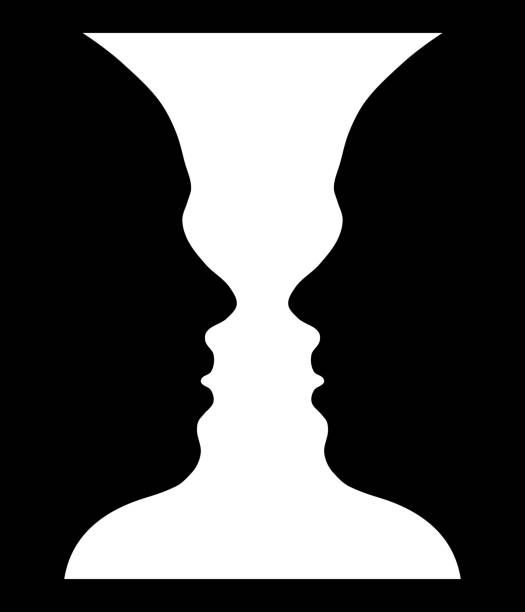Meditation Is Not What You Think: Why Shifts in Perspective Lead to Lasting Change
The Surprising Power of “The View”
When we first started meditating, we thought the practice was all about those minutes on the cushion. Were we focused? Distracted? Calm? Agitated? It felt like the quality of those sessions determined whether we were “good” meditators.
But looking back, the biggest changes in our lives didn’t come from perfect meditation sessions. They came from a shift in perspective—and from bringing that shift into daily life.
Beyond the Cushion
In contemplative traditions, this process is described in three parts: view, meditation, and application (you can read a more in depth discussion on this topic from our last post here).
View is the perspective shift. For Cort, anxiety stopped being just a problem and became something interesting to explore. For Richie, even “bad” meditation sessions turned into opportunities once he stopped judging them and simply noticed distraction itself.
Meditation is the formal practice—time to grow familiar with that new way of seeing.
Application is carrying the view into daily life, often in small moments.
Flipping the Lens
One way to describe the view is like a perceptual illusion. At first you only see the vase, then suddenly you see two faces. Once you’ve seen both, it’s easier to flip back and forth.
In the Tibetan tradition, the word meditation literally means to grow familiar with. Instead of thinking meditation is about perfect focus, it becomes about returning again and again to a different way of seeing.
Most of us start out with a problem mindset: “My mind is broken, and meditation will fix it.” But the shift is realizing that awareness is present even in distraction. Nothing needs to be fixed—it just needs to be noticed.
That little flip changes everything. Problems become practice. Obstacles turn into supports. Judgment gives way to curiosity.
What the Science Shows
The formal scientific study of “the view” is a relatively unexplored area (take note, budding scientists), but we have seen examples of its impact. In psychology, Carol Dweck’s work on growth mindset shows that brief perspective shifts can spark lasting benefits years later.
And in a recent Healthy Minds study discussed on our next podcast, we found something remarkable:
Participants were divided into three groups. One group practiced meditation with the Healthy Minds program. A second group—the “view only” group—heard teachings about perspective and wellbeing but did no meditation at all. The third was a waitlist control.
The results? The “view only” group still showed meaningful improvements in wellbeing. Just learning a new perspective, even without meditation, was enough to spark change. This suggests that the view itself is a powerful ingredient—and perhaps the most important one.
Try This: Everyday Practice
The good news is that working with view and application doesn’t require a cushion or long retreats. As Richie likes to say: it’s easier than you think.
Here’s something you can try today:
Notice a moment when you feel stressed out, reactive, or scattered.
Instead of viewing your mental or emotional state as a problem, shift your perspective and see it as an opportunity to practice.
Get curious and explore what the experience is actually like.
What thoughts are playing in your mind?
What do you feel in your body?
How are your thoughts and emotions shaping the way you see yourself, other people, or the world itself?
Beneath the shifting sands of thoughts and feelings, a knowing presence is always there. That’s awareness. Open up to the possibility that there is a part of you that does not need to be fixed or improved.
Recognizing this, allow yourself to simply be. Rest naturally in the present moment without needing to change or alter anything.
That’s it. Just a few seconds. Simple, but powerful.
Once you shift from seeing awareness in distraction, or curiosity in anxiety, suddenly your day is filled with practice moments.
A Final Thought
If there’s one message we’d leave you with, it’s this: meditation isn’t about forcing the mind into special states. It’s about learning to relate differently to whatever is happening—and letting that shift ripple through daily life.
We’d love to hear how you explore this in your own practice. Share your reflections in the comments—we’ll be reading.
Warmly,
Cort + Richie
Tune in later this week on the podcast for the full conversation. We’ll share more stories, the latest science, and simple ways to explore the power of view, meditation, and application in your own life.
Do you have topics you would like to see in future posts, suggestions for features, or areas of improvement? We would love to hear from you HERE!






This is just great, I love the clear framework. Particularly the ‘application’ element which is often not highlighted enough i.e. how do we take what we have learned into daily life?
For me, not judging my state of mind is still a challenge, even after 25 years of practice, but on a positive note - the edges of the judgment have worn off quite a bit!
I really enjoyed your take on meditation. I’ve studied TM and gave up on it because I was too focused on getting to a certain”state” but this makes more sense. 🙏🏼